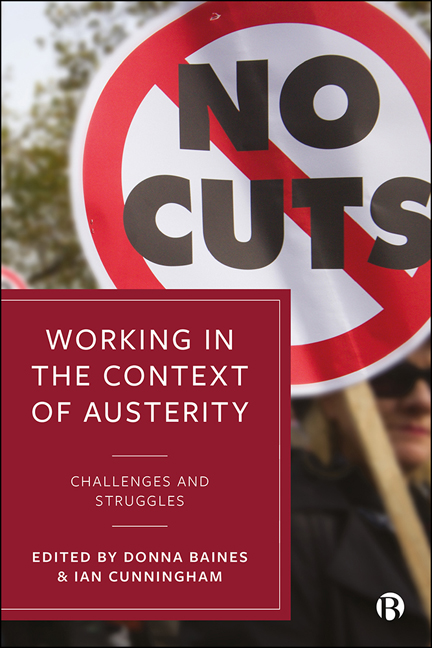8 - Public Sector Reform and Work Restructuring for Firefighters in Scotland
Published online by Cambridge University Press: 18 March 2021
Summary
Introduction
This chapter examines restructuring in the public services as a policy response to fiscal consolidation pressures. More specifically, it describes restructuring efforts aimed at rationalization and efficiency gains at several levels, including national, organizational, workgroup and job. The case study of Fire and Rescue Services in Scotland illustrates the manifestations of work restructuring at different levels of analysis, and potential consequences for individual experiences of work.
As detailed in Chapter 1, the transformation of the global financial crisis (GFC) into a sovereign debt crisis put public budgets under strain and public expenditure in the spotlight in a significant share of Organisation for Economic Co-operation and Development (OECD) nations. Contraction of public expenditure through cuts and restructuring of public services formed part of the main policy response. Considering the labour-intensive nature of service provision, savings in public sector workforce compensation formed one of the main foci (Glassner and Watt, 2010; Grimshaw et al, 2012), either through reductions in workforce size or through direct decreases in remuneration and benefits (OECD, 2012, p 23).
The combined pressures of identifying parts of the public services that could be (further) cut in a context of increased demand for public services in times of recession, such as for social security and education, arguably further fuelled fiscal retrenchment measures that sought efficiency gains under the banner of ‘more with less’ (Vaughan-Whitehead, 2013, pp 8, 36; Eurofound, 2015, pp 5–6, 60). As the OECD (2011a, p 9) put it: ‘To avoid an excessive curtailing of public services, the state needs to be streamlined and made more efficient.’ Consequently, various rationalization efforts involving a restructuring of public services from national level down to the job or workgroup level could be observed as policy responses across Europe. Efficiency gains and cost reductions were key drivers of such restructuring measures.
The focus of this chapter is restructuring as a means of addressing the ‘labour problem’ of how to enhance efficiency in the public sector (Worrall et al, 2010). It begins by identifying multiple levels where restructuring has occurred, and an analytical framework for the case of the Scottish Fire and Rescue Service.
- Type
- Chapter
- Information
- Working in the Context of AusterityChallenges and Struggles, pp. 151 - 170Publisher: Bristol University PressPrint publication year: 2020



